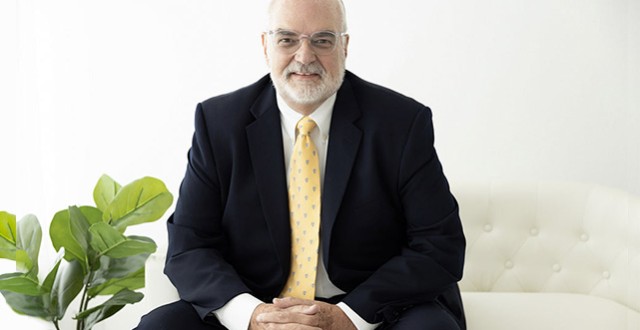
- Mediation
- Arbitration
- Court Neutrals
- Online Dispute Resolution
- Technology
- Court Decisions
- More
- Legislation
- Healthcare
- Guest Posts
- John DeGroote
- John C. Fleming
- Rick Freeman
- Professor Peter Friedman
- Honorable W. Royal Furgeson, Jr.
- James M. Gaitis
- Laura A. Kaster
- Professor John Lande
- Philip J. Loree, Jr.
- Michael McIlwrath
- F. Peter Phillips
- Professor Alan Scott Rau
- Professor Thomas J. Stipanowich
- Professor S.I. Strong
- Richard Webb
- Glen M. Wilkerson
- International arbitration
- Regulation
- Sports and Entertainment
- We’re Back!!!!Well, it’s been a while since we published and that is about to change. Since I spent much of last year becoming
 JAMS Welcomes Karl Bayer to its Panel of NeutralsJAMS, the world’s largest private alternative dispute resolution (ADR) provider, is pleased to announce that Karl Bayer
JAMS Welcomes Karl Bayer to its Panel of NeutralsJAMS, the world’s largest private alternative dispute resolution (ADR) provider, is pleased to announce that Karl Bayer Class Action Waivers in Arbitration Agreements: The Twenty-First Century Arbitration Battleground and Implications for the EU CountriesLinda S. Mullenix, Morris & Rita Atlas Chair in Advocacy at the University of Texas School of Law, has written “Class Ac
Class Action Waivers in Arbitration Agreements: The Twenty-First Century Arbitration Battleground and Implications for the EU CountriesLinda S. Mullenix, Morris & Rita Atlas Chair in Advocacy at the University of Texas School of Law, has written “Class Ac Picking the Proper Technological Tool for Problem-Solving in ArbitrationProfessor Amy J. Schmitz, John Deaver Drinko-Baker & Hostetler Chair in Law and Co-Director of the Translational Data An
Picking the Proper Technological Tool for Problem-Solving in ArbitrationProfessor Amy J. Schmitz, John Deaver Drinko-Baker & Hostetler Chair in Law and Co-Director of the Translational Data An
Recent Posts
Arbitration Order Bars Adult-Film Actress from Discussing Relationship with Trump
A representative for Donald Trump reportedly won an arbitration proceeding against an adult-film star just days before she filed a lawsuit against Trump in a California trial court.
Continue reading...Clause Construction: A Glimpse into Judicial and Arbitral Decision-Making
Professor David Horton, University of California, Davis, School of Law, has published “Clause Construction: A Glimpse into Judicial and Arbitral Decision-Making,” Duke Law Journal, Vol. 68, Forthcoming.
Continue reading...SCOTX Agrees to Consider Whether Crop Insurance Dispute Was Properly Submitted to Arbitration
The Supreme Court of Texas has agreed to consider whether a crop insurance dispute was properly submitted to arbitration.
Continue reading...SCOTX Holds Payday Lender Did Not Waive Right to Arbitration
The Supreme Court of Texas has ruled that a payday lender did not waive its right to compel arbitration against the company’s defaulting customers.
Continue reading...Arbitration
The Supreme Court of the United States has granted certiorari in another arbitration case.
Continue reading...Mediation
The Ninth Circuit Court of Appeals has enforced a mediation confidentiality agreement and refused to nullify a mediated settlement agreement. In Facebook v. ConnectU, Inc., No. 08-16873, (9th Cir., April 11, 2011), Cameron and Tyler Winklevoss sued Mark Zuckerberg in Massachusetts claiming he stole the idea for the social networking site Facebook from them. Zuckerberg countersued the Winklevosses and their social networking site, ConnectU, in California. The United States District Court for the Northern District of California ordered the parties to mediation. Prior to mediation, all parties signed a confidentiality agreement which stipulated “all statements made during mediation were privileged, non-discoverable and inadmissible,” in any other proceeding. During mediation negotiations, the Winklevosses agreed to give up all of ConnectU in exchange for cash and a percentage of ownership in Facebook. The settlement fell apart during negotiations over the form of the final deal documents, and Facebook filed a motion with the district court seeking to enforce it. ConnectU argued that the Settlement Agreement was unenforceable because it lacked material terms and had been procured by fraud. The district court found the Settlement Agreement enforceable and ordered the Winklevosses to transfer all ConnectU shares to Facebook. This had the effect of moving ConnectU from the Winklevosses’ to Facebook’s side of the case. The Winklevosses then appealed to the Ninth Circuit Court of Appeals. The Court of Appeals rejected each of the Winklevosses’ claims. The court also stated, The Confidentiality Agreement, which everyone signed before commencing the mediation, provides that: “All statements made during the course of the mediation or in mediator follow-up thereafter at any time prior to complete settlement of this matter are privileged settlement discussions . . . and are nondiscoverable and inadmissible for any purpose including in any legal proceeding. . . . No aspect of the mediation shall be relied upon or introduced as evidence in any arbitral, judicial, or other proceeding.” (emphasis added). This agreement precludes the Winklevosses from introducing in support of their securities claims any evidence of what Facebook said, or did not say, during the mediation. See Johnson v. Am. Online, Inc., 280 F. Supp. 2d 1018, 1027 (N.D. Cal. 2003) (enforcing a similar agreement). The Winklevosses can’t show that Facebook misled them about the value of its shares or that disclosure of the tax valuation would have significantly altered the mix of information available to them during settlement negotiations. Without such evidence, their securities claims must fail. See In re Daou Sys., Inc., 411 F.3d 1006, 1014 (9th Cir. 2005); see also McCormick v. Fund Am. Cos., 26 F.3d 869, 876 (9th Cir. 1994). According to the Appellate Court, The Winklevosses are not the first parties bested by a competitor who then seek to gain through litigation what they were unable to achieve in the marketplace. And the courts might have obliged, had the Winklevosses not settled their dispute and signed a release of all claims against Facebook. With the help of a team of lawyers and a financial advisor, they made a deal that appears quite favorable in light of recent market activity. See Geoffrey A. Fowler & Liz Rappaport, Facebook Deal Raises $1 Billion, Wall St. J., Jan. 22, 2011, at B4 (reporting that investors valued Facebook at $50 billion —3.33 times the value the Winklevosses claim they thought Facebook’s shares were worth at the mediation). For whatever reason, they now want to back out. Like the district court, we see no basis for allowing them to do so. At some point, litigation must come to an end. That point has now been reached. The Ninth Circuit Court of Appeals affirmed the Northern District of California and refused to nullify the parties’ settlement agreement. Technorati Tags: Mediation
Continue reading...Healthcare Disputes
Applying Conflict Resolution Skills in Health Care PART III: Focus on Interests, Not Positions
By Holly Hayes Our health care conflict resolution series began with Part I, applying the “principled negotiation” method to health care (post available here) and followed with Part II, examining a case study of “Separating the People from the Problem” (post available here). In this post, let’s take an example of a physician and a hospital group negotiating to buy the physician’s practice to see how “positional bargaining” results in failure to find a solution. Physician: I need you to buy my practice for $X and I will not take weekend call. If you don’t want to buy my practice, my partners and I can take it down the road to hospital Y. Hospital Representative: We are willing to offer you $Z for your practice and we must have a weekend call rotation as part of the deal. Physician: You don’t care about me or my practice, this discussion is over. Wise solutions acknowledge interests, not positions. The basic problem with the physician and the hospital representative is not that one is buying and one is selling, the conflict is between their interests or their concerns, fears, needs and desires related to the negotiation. What are some tools to help reconcile interests rather than merely seeking to compromise positions? In Getting to Yes, Roger Fisher and William Ury describe techniques for identifying interests so that options can be developed that meet both party’s interests. Ask “Why?” – put yourself in their shoes. Ask “Why Not?” — why doesn’t the other side agree with us? Realize each side has multiple interests – the physician wants a secure income for his family, he wants time with his family so he does not want to always be on call. Realize the most powerful interests are basic human needs – security, economic well-being, control over one’s life, a sense of belonging, recognition. Talk about interests – make your interests come alive for the other side. The hospital representative can talk about ways to include the physician in decision-making at the hospital and about what the hospital needs in terms of income to make a profit to reinvest in its people and physical plant. Using these techniques, let’s see how the conversation between the physician and the hospital representative is more productive: Physician: I need you to buy my practice for $X and I will not take weekend call. If you don’t want to buy my practice, my partners and I can take it down the road to hospital Y. Hospital Representative: I understand you have spent your time and your own income to build such a successful practice. You have been a great partner for us for five years. Can you help me understand how you arrived at the $X figure and talk a little about the call issue? Physician: We recently bought an MRI and quite a bit of other costly equipment that would be included in the purchase price. I have spoken with some other physician practices and this price seems fair. I just want to be fairly compensated for the value my partners and I have brought to this practice over the past five years. In terms of call, I want time with my family on the weekends. I am afraid that if one of my partners leaves, I will have to take both my call and their call and who knows when a new physician could be recruited. I want control over my life. Hospital Rep: Would it be alright with you if we had both your accountant and my CFO take a look at the practice financials? There are also some industry standards we could apply to the purchase price. As for call, you make a very good point about how much call would be needed. Of course, my problem is that I need to provide certain coverage or the hospital cannot provide certain services and those patients will go down the road. This is a problem across the country and I know many hospitals have begun to pay very high prices to provide call for certain specialties. I wonder if you would consider being part of our medical staff executive committee as part of a purchase package? This would not guarantee you no call, but it would give you a chance to help make policy about how we move forward. If we can reach agreement on purchasing your practice, it will take both of us to make the best decisions for a successful partnership. Physician: Yes, I can agree to those next steps. I am starting to feel a level of comfort that I will be treated fairly. As the two parties talked about their interests by asking questions and realizing that the most powerful interests are basic human needs, they both came closer to the purpose of negotiating — serving their interests and finding an acceptable solution. Part IV in our series will explore more on this topic – “how to invent options for mutual gain”. We welcome any comments you have about conflict you have experienced in health care and lessons you have learned. Technorati Tags: Healthcare, ADR Holly Hayes is a mediator at Karl Bayer, Dispute Resolution Expert where she focuses on mediation of health care disputes. Holly holds a B.A. from Southern Methodist University and a Masters in Health Administration from Duke University. She can be reached at: holly@karlbayer.com.
Continue reading...Applying Conflict Resolution Skills in Health Care PART II: Separate the People from the Problem
By Holly Hayes Last week, we started our health care conflict resolution series with applying the principled negotiation method to health care (post available here). Principled negotiation involves: Separating the people from the problem. Focusing on interests, not positions. Generating a variety of possibilities before deciding what to do. Insisting that the result be based on some objective standard. This post will focus on “separating the people from the problem”. Here is an example of a healthcare conflict where the parties misunderstood each other, got angry and upset and started taking things personally: Radiology Director: Technician X, I have a patient complaint here that says it took over an hour for a basic scan to be performed last week. What were you doing that caused such a delay? Technician X: Which day, which patient? What were the details? Radiology Director: That doesn’t matter, what matters is that now we have a complaint against our department. Our reputation as a department and as a patient-friendly hospital is on the line. I’m going to have to put this complaint in your file. Now, what happened? Technician X: I guess it doesn’t matter, what matters is the complaint. I’ll try to see that it doesn’t happen again. Radiology Director: You do that. Another complaint like this and we’ll have to come up with a disciplinary action plan. What happened? The problem, “we cannot have complaints like this” became a personal attack on Technician X. If we can separate the people from the problem, we can maintain a good working relationship and successfully address the problem. In Getting to YES, Roger Fisher and William Ury outline three categories to think about in terms of dealing with people: perceptions, emotions and communication. Perceptions: In our example, the parties did not “put themselves in the other person’s shoes”. Had the Radiology Director listened to and responded to Technician X when he asked for the details, she might have gained a better understanding of the technician’s perception of the problem and why it happened. Understanding Technician X’s point of view would have allowed the Director to proceed with new information to solve the actual problem of a delay of service. Emotions: The Director did not recognize or explain her own emotions and why she was worried about the complaint. She also did not have any idea about how the technician felt about the complaint. When parties are freed from the burden of unexpressed emotions they can more likely work on the problem. Communication: In our scenario, the Director did not listen actively and acknowledge the technician as a human being with potentially useful information to address the problem. Let’s change the situation to separate the people from the problem using the techniques described above: Radiology Director: Technician X, I have a patient complaint here that says it took over an hour for a basic scan to be performed last week. Can you tell me more about what happened with Patient Y on Date Z? Technician X: I remember that patient and that incident. That was the day our CT scanner broke and we didn’t have a spare part, so we had to schedule all of the patients on one machine. We tried to explain the problem to all of the patients, but the waiting time was much longer than the departmental goals we have set for ourselves. I felt really bad about Patient Y because she was next in line when the scanner broke and her wait was the longest. Radiology Director: It is upsetting to me when we have a complaint because I have to respond to the CEO about what happened. You have given me some good information though. Do we need to work with our Physical Plant Maintenance Department and come up with a better system to keep spare parts on hand? Technician X: I was really upset about the delay, too. I would be happy to schedule a meeting with the Plant Department and come up with a better system. Technician A has experience in this area from another facility, could she work with me and we can bring you some recommendations to consider in the next two weeks? Radiology Director: Yes, please work with Technician A and the Physical Plant Department. Maybe we can turn this negative complaint into a positive by making sure it doesn’t happen again. I feel so much better now about communicating our plan of action to the CEO. When the Radiology Director dealt with Technician X as a human being and dealt with the problem on its own merits, she was able to maintain a good working relationship while successfully addressing the problem. Look for the next post in our series where we will discuss focusing on interests, not positions in the health care setting. We welcome any comments on this post and any suggestions for upcoming posts in this series. Technorati Tags: Healthcare, ADR Holly Hayes is a mediator at Karl Bayer, Dispute Resolution Expert where she focuses on mediation of health care disputes. Holly holds a B.A. from Southern Methodist University and a Masters in Health Administration from Duke University. She can be reached at: holly@karlbayer.com.
Continue reading...Legal Research
About Disputing
Disputing is published by Karl Bayer, a dispute resolution expert based in Austin, Texas. Articles published on Disputing aim to provide original insight and commentary around issues related to arbitration, mediation and the alternative dispute resolution industry.
To learn more about Karl and his team, or to schedule a mediation or arbitration with Karl’s live scheduling calendar, visit www.karlbayer.com.













